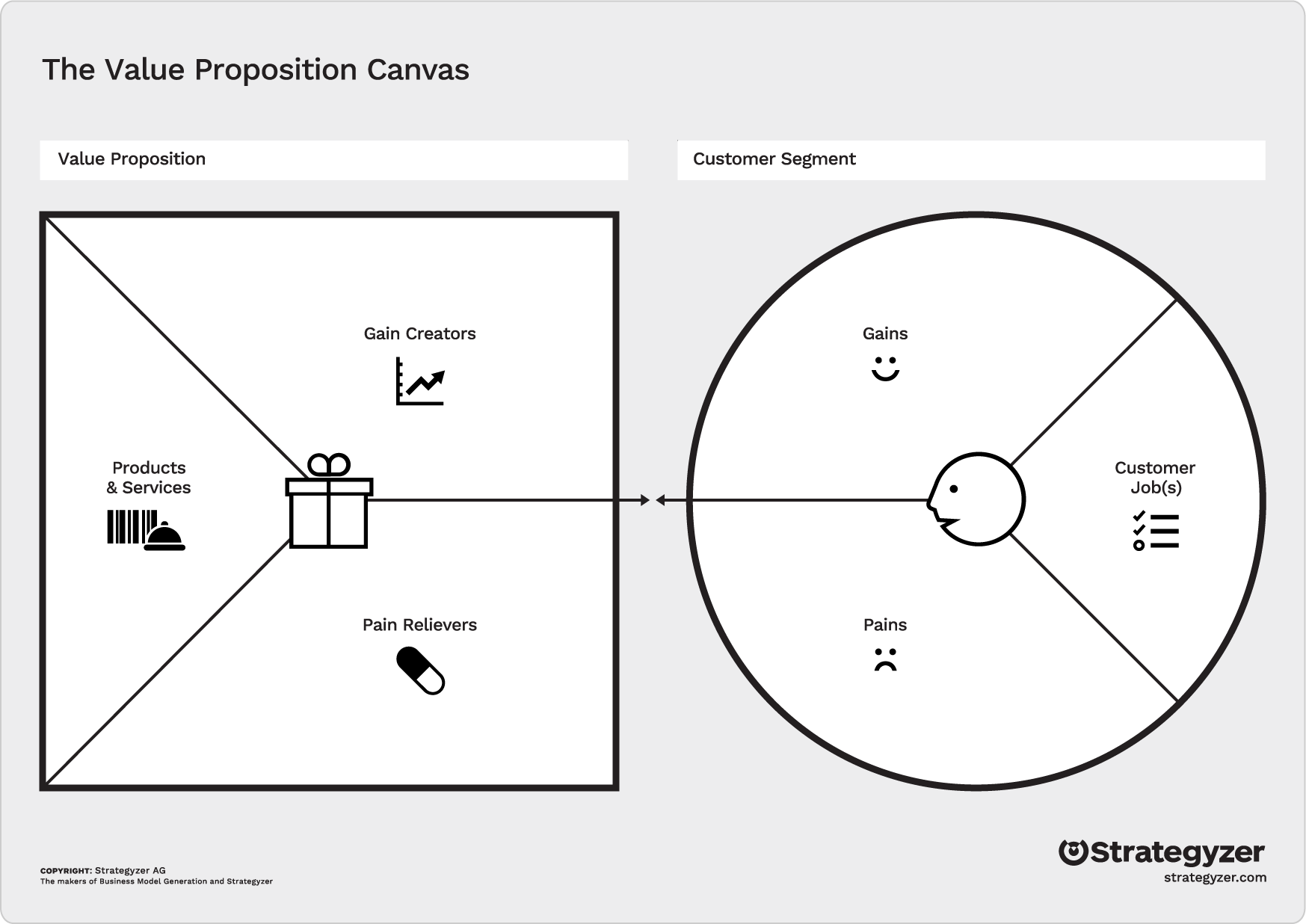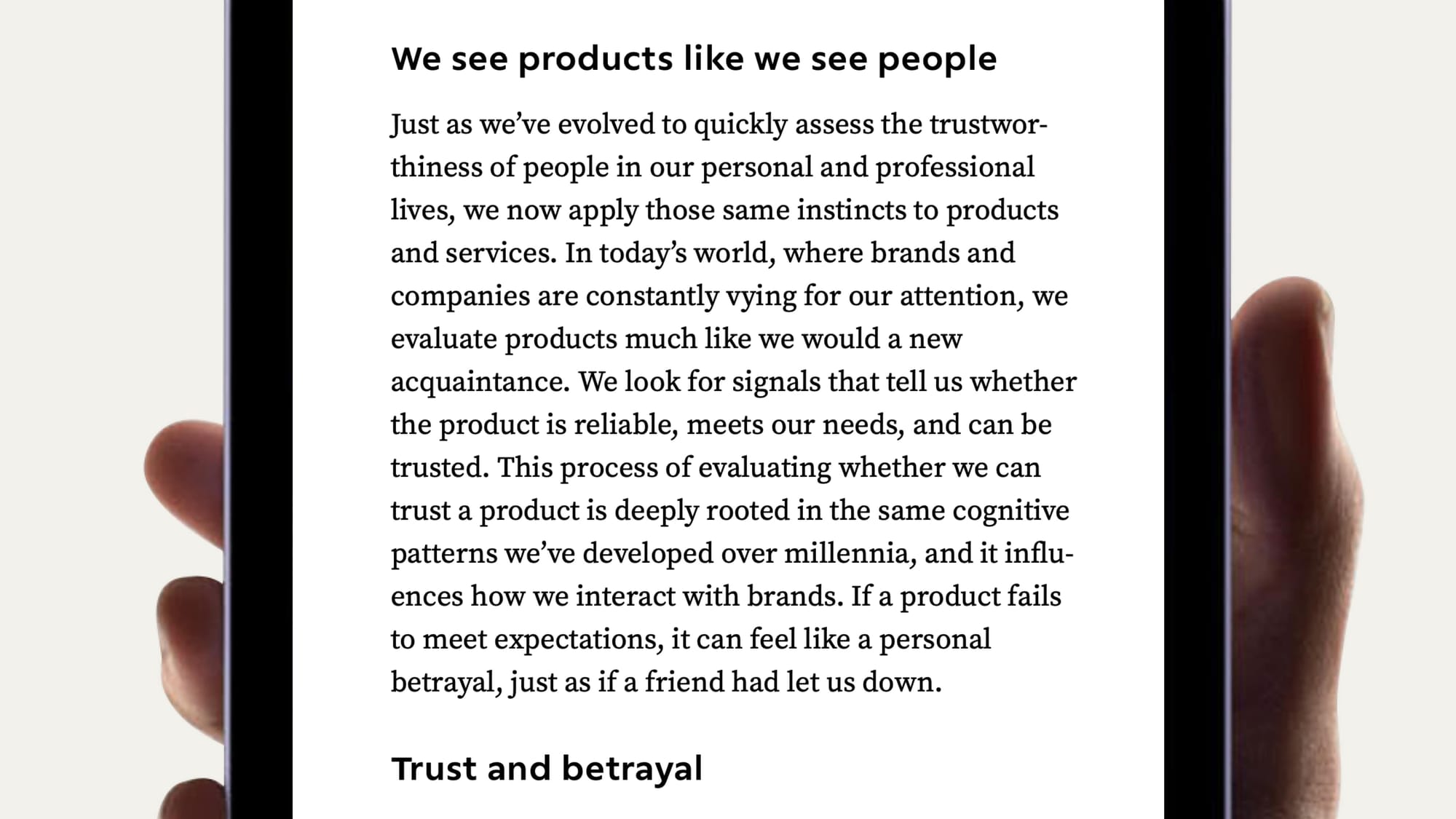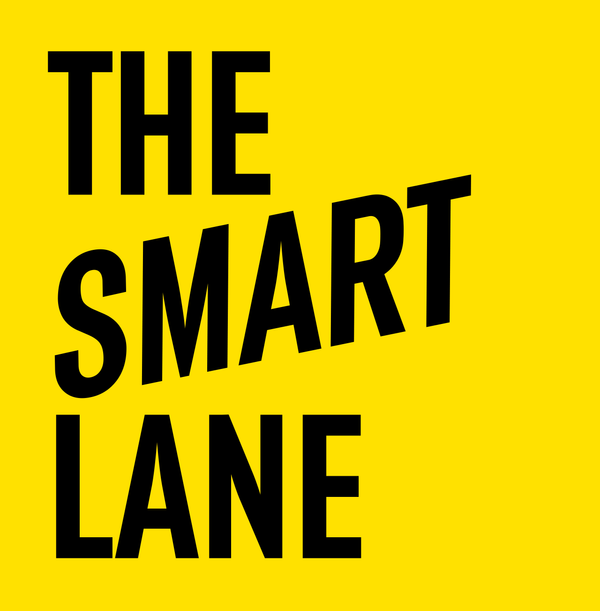Let’s Talk About The Basics of Product Creation
You can learn the essentials of product creation and start shaping your ideas into realistic concepts.

The task of creating a product can feel daunting, but the process is quite straight forward and if you follow the steps, you’ll see it makes a lot of sense.
Anyone can start out with creating a product, even if you may want to hire experts later at some point. Product creators take inspiration from everyday challenges and transform their own experiences into ideas for products that could be useful for other people.
Before we begin
A well-thought-out product has the potential to shape consumer habits, influence markets or even contribute positively to society. Think of products that improve daily life—like a new kitchen appliance that saves time for the family or an app that helps people manage stress with the help of others. These aren’t isolated products; they are connectors. They shape people’s lives, create new opportunities and communities and often drive change on a broader scale.
You will be smarter, this newsletter, is pretty new. I started out only a couple of weeks ago, after publishing my first book: Be Smarter With Creating Products (available on Amazon Kindle and Apple Books). This first newsletter is your starting point. I want to help you navigate the basics of this process, from your first idea to a final product people love to use.
You don’t need a technical background to create something great. Creating products isn’t reserved for product managers or product designers. With a clear, step-by-step approach, you can learn the essentials of product creation and start shaping your ideas into realistic concepts.
This newsletter is going to give you the starting points for you to build your product. In the sections ahead, we’ll cover each stage in the simple, actionable terms, focusing on what’s essential without overwhelming jargon. I feel this enables virtually anyone with a product idea to move forward and making it a reality.
Differences in creation and production of products
Product creation is often mixed with production, but these are different stages in the product’s development.
The creation part consists of imagining, designing, and refining an idea into something that meets a specific need. It’s about shaping the concept, developing its features, and making sure it aligns with users’ needs.
Production, on the other hand, is the physical or digital manufacturing phase that follows strategy and creation; it’s the step where an already-developed product is made at scale for distribution.
The distinction between creating a digital product, like an app, and a physical product, such as a furniture item, lies largely in their design and development processes. Both, digital and physical products, share similar creation principles, involving stages of ideation, prototyping, and testing to make sure they work as intended.
An essential part of product creation is thinking about product value proposition. Finding a good product value proposition ensures that the product serves a real purpose, offering something genuinely useful or enjoyable to its intended audience. A product’s value is based on the perception of the user. When a customer meets a product first time, there’s this unwritten promise behind it, the thing the product is supposed to do.
With the right product value proposition you are presenting good, convincing reasons to the customer why they would want to buy and use your product. (Deeper information: https://roadmunk.com/guides/product-value-proposition-models-for-product-managers/)

When we’re creating products, we’re designing them with intention. When we’re clear on what we’re trying to achieve and for whom, and what value the product represents for the customer and user, the process gains direction and clarity.
The product creation process
The product creation process guides you from the first idea to a fully developed product that is prepared for the market. Understanding this process helps you see the distinct stages involved in making a product successful. Each phase builds on the progress gained in the previous steps.
When you strategise about the product idea, when you are trying to figure out what’s important, what you want to add as features or functions, talk to your potential customers. Meet them on Reddit, on Facebook, on LinkedIn or YouTube, TikTok and Instagram. Figure out what is important and relevant to them, in the area you want to launch your product.
These are the phases you need to cover:
- Discover what is needed
- Define how it can be solved (ideation)
- Develop concepts, prototypes and user flows
- Deliver prototypes until the product is ready for production
The process begins with the two steps discovery and ideation, where you’re looking at the initial ideas and try to figure out what’s needed. The first idea is often based on input from yourself, your own experiences, or those of others. Or it can be based on a market gap you’ve recognised.
We are now entering the definition phase.
These rough ideas need to be shaped into concepts—something that includes answers to the questions why the product should exist, what it does, for whom it is and in which market it could have success.
When you have a concept, a more tangible set of ideas that form a whole, you can begin to plan and prototype the concepts as user flows and wireframes—rough sketches of what the product might look like and how it might function.
This is the development phase.
A prototype can be anything from a rough sketch on a napkin ot an interactive, clickable demo on a phone. Prototyping allows you to get valuable feedback early on, helping you refine and improve the product before investing more heavily. Gather input from potential users, iterate on their feedback, and keep refining your concept. This approach not only builds confidence but also ensures that each step forward is based on real insights.
A user flow is the row of steps a user takes to complete a task. In a contacts app, for example, it would be the whole line of steps needed to create a contact and entering contact details—that’s a flow. User flows help you to understand that you’ve got all steps covered and nothing is forgotten. Laying out these linear flow patterns also helps you to see if users can really get the product to do what they want it to do. If it doesn’t do what they’re expecting, it leads to a broken user experience and frustration.
With hardware products, user flows and wireframes also help you to make sure the product works as expected. But you’ll also want to create physical, tangible prototypes. There are typically many prototype versions of a product before you can say it’s ready for production. In both cases you’ll need real exemplary users to test your hypothesis and prototypes.
Design is not just about how something looks. It’s about how it works, but even more so, it’s about how it fulfils user needs and expectations. The people who will buy or use your products will have intent and agency. They will want to do something and they’re looking to do it with your product, if you do your homework to find out how to meet their needs accordingly.
Testing is essential for identifying any issues, gathering feedback, and making necessary adjustments before the product is launched. Testing shouldn’t be done only at the end of a product creation process. It’s a good idea to continuously check if you’re on the right track. Show your prototypes to potential customers and let them try them out. Let their thoughts flow and tell you what they think or feel when they’re using the prototype. You’ll be surprised to find that you didn’t think of many of the things these future users will point out to you.
We are now in the delivery phase.
When you’re done with creating concepts, designing user flows and prototypes, testing and improving them, and you feel you’ve got your product ready for production, it’s time to look at production. In software, as well as with hardware, this can be done using the Kanban or Scrum method—both are so-called Agile development formats.
The time it takes to develop a full product depends of course. With complex hardware, you may need years to finalise a working, usable product. With software (mobile and web apps), it takes much less time, but it may still need many months until you arrive at a satisfiable result. When all parts fit together, the app or physical product has been tested one last time, you can launch it to the market.
Based on how the market receives the product, on how customers perceive and use it, based on their feedback, you can develop and implement adjustments and improvements. With mobile or web applications, this means software updates. With hardware products, improvements are usually released in an improved version of the product line (think iPhone 15 and iPhone 16).
The whole process is often iterative, especially for digital products, where testing and improvement are continuous. Rather than a strict linear process, each stage may loop back to refine earlier steps. This iterative approach ensures that the product can evolve and adapt, staying relevant to users even as their needs change.
Differences between digital and physical products
Creating digital products, like apps or software, is quite distinct from developing physical goods, and understanding these differences is key. Digital products are often more flexible and can be updated continuously, allowing creators to adapt to user feedback and improve functionality even after the initial launch. In contrast, physical products usually have a more defined endpoint once they’re manufactured, making it crucial to finalise details before mass production.
For digital products (mobile apps, web apps, software as a service, etc.), one additional thing to think about is product content creation—the development of assets like user guides, an onboarding process, help content, and in-app messages that guide users through the product. For digital products, these assets need to evolve with each update or new feature. The challenge here lies in maintaining clear, relevant content that supports users as they navigate new functionalities or interface changes over time.
The evolving nature of digital products also means there’s an expectation for regular improvements, which is less common in physical goods (although we see trends emerging with replaceable parts). With apps and software, users anticipate updates that refine their experience or add value, while physical products typically receive revisions only when a new model is launched. This iterative approach to digital products enables creators to respond to user needs dynamically, keeping the product aligned with market expectations and technological advancements.
Creating products with purpose and impact
At its core, product creation is about addressing people’s needs. Independently if you want to solve everyday problems, use an advanced technology, or improve convenience, products are created with the goal of making life easier or more enjoyable for others. Successful products need to bring value to people, either by simplifying a task, fulfilling a feature other products in the same market don’t have, or, if they’re exceeding customer expectations, they might even inspire change in behaviours or attitudes.
The purpose of a product goes beyond its basic function. A product which people fall in love with has the power to generate loyalty, forming a connection that makes it meaningful in people’s lives.
A significant part of successful product creation is delivering on the product value proposition. This promise is ensuring the product’s benefits align with user expectations and needs. When users sense that a product truly reflects and meets their needs, it creates a feeling of trust. They see the product as relevant for them and reliable, which is crucial for long-term engagement—the foundation for success of your product.
Products that set new standards, introduce innovative technology, or promote sustainable practices can even influence entire industries or societal norms. By addressing challenges or introducing efficiencies, products have the potential to contribute positively to larger trends and global issues. This means your product creation isn’t just about inventing something; it has the potential to shape a future that benefits society as a whole.
But you don’t always need the ambition to change the world. A product that simply solves an existing problem people have, will most likely be just as successful and satisfy the need people have.
Key considerations for product creation
Setting clear goals from the start is essential for any successful product. Knowing what you aim to achieve helps steer the direction of development and provides a framework for decision-making. Equally important is understanding the market you’re entering. This includes identifying your target audience, recognising what similar products exist, and pinpointing how your product will stand out. This is called the market fit. Clear goals and market insights together create a foundation that ensures your product isn’t like other products, but adds significant value that sets it apart from other products in the market.
Product creation also involves choosing a development approach that aligns with your goals. Broadly speaking, there are two primary types: incremental and disruptive.
Incremental development focuses on improving existing products or technologies, which can be effective for filling gaps or enhancing user experience.
Disruptive development, on the other hand, seeks to create something entirely new that changes the landscape. Knowing which approach best suits your goals can guide your design and development choices, shaping the end product to meet both immediate and long-term objectives.
Another consideration is sustainability and longevity. We live in a world plagued by polution, waste, plastic islands on the ocean and climate change. Today’s products should be built to last and we should be mindful of their environmental impact. Doing this right will involve keeping the carbon footprint small, using sustainable materials, designing it to create minimal waste, or planning for future add-ons to products, so they don’t need to be completely replaced, but in parts. (updates for software, replacement parts for hardware).
Thinking about sustainability from the beginning not only benefits the environment but also shapes trust with consumers who are increasingly aware of their own impact, so these considerations add real value and appeal to your product in the long run.
Wrapping it all up
For anyone starting out, it’s important to remember that every successful product began as a simple idea, but it was the work with potential customers that brought it to life. With the right mindset and a willingness to learn, you can take that idea and transform it into something meaningful. Product creation doesn’t require a degree in design or years of industry experience; it just takes clarity, determination, and a commitment to understanding your audience’s needs.
There are plenty of resources available to support you, from online guides and prototyping tools to communities with other creators. I encourage you to explore these sources and keep learning as you go. With each small step, you’ll find yourself getting closer to solid product ideas that could make a real difference. Keep your focus on the value you aim to bring to your product’s audience and regularly take a step back and ask yourself critical questions to gain focus.
Be smarter with more newsletters
If you’re finding value in these insights, consider joining the paid subscription for just $50 a year. As a paid subscriber, you’ll receive four newsletters each month filled with practical advice, strategies, and deeper dives into the essentials of product creation. Free subscribers receive one newsletter monthly, but with a paid subscription, you’ll stay up-to-date and gain access to exclusive, more detailed and focussed content that will sharpen your skills and broaden your understanding.
Don’t miss the chance to keep learning something new. Upgrade today and be smarter every week.

If you’re looking for a deeper understanding of how Product Creation works, read my book: “Be Smarter With Creating Products”. It’s available on Amazon Kindle and Apple Books now, and you can read a review here on “Discovery”.




